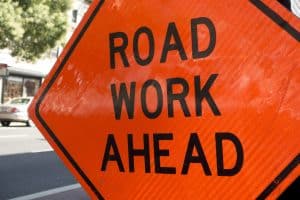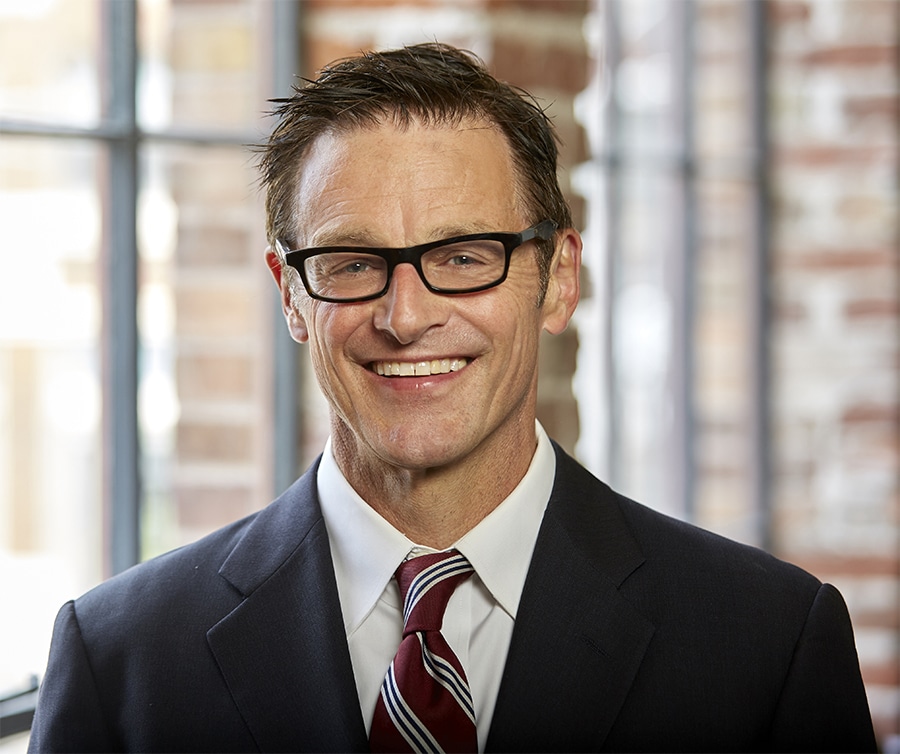Avoiding Accidents in Kansas City’s Construction Zones
 Kansas City, like many growing metropolises, is undergoing constant improvement. While great for our city, this progress often means construction zones that can disrupt our commutes and introduce challenges to safe driving. Although these projects are necessary, navigating them requires extra vigilance and awareness. Inattention or recklessness in construction zones can lead to serious accidents and injuries.
Kansas City, like many growing metropolises, is undergoing constant improvement. While great for our city, this progress often means construction zones that can disrupt our commutes and introduce challenges to safe driving. Although these projects are necessary, navigating them requires extra vigilance and awareness. Inattention or recklessness in construction zones can lead to serious accidents and injuries.
Our lawyers can help if you’ve been injured in a Kansas City car accident.
Kansas City construction zone hazards
Construction zones can transform familiar roads into ever-changing environments. Here’s what to watch out for:
- Narrowed lanes and merges: Reduced lane widths require heightened focus. Be prepared to adjust your following distance and anticipate frequent lane changes.
- Uneven pavement and debris: Expect uneven surfaces, bumps, and loose gravel. Avoid sudden maneuvers and maintain a slower speed to minimize loss of control.
- Workers and equipment: Construction workers are at constant risk near moving vehicles. Be mindful of flaggers, construction vehicles entering and exiting the zone, and potential blind spots around equipment.
- Shifting traffic patterns: Lane closures and detours are common. Pay close attention to signage and lane markings, which can change frequently.
- Reduced visibility: Dust, fog, or temporary lighting can significantly reduce visibility. Use headlights appropriately and be extra cautious when visibility is compromised.
- Increased traffic congestion: Expect delays and frustration. Maintain your composure, avoid aggressive driving, and remember, patience is key.
How should I drive in a Kansas City construction zone?
By adopting a defensive driving mindset, you can significantly reduce your risk of accidents:
- Slow down: Posted speed limits are often reduced in construction zones for a reason. Factor in additional stopping distance due to uneven surfaces and unexpected situations.
- Maintain a safe following distance: Double or even triple your usual following distance to account for sudden stops and unexpected maneuvers by other drivers.
- Minimize distractions: Put down your phone, avoid loud music, and focus solely on the road. Construction zones demand a driver’s undivided attention.
- Use turn signals consistently: Communicate your intentions clearly to other drivers, especially when changing lanes or merging.
- Be predictable: Maintain a steady speed and avoid erratic lane changes. Signal well in advance and make smooth, controlled maneuvers.
- Stay alert and anticipate changes: Scan the road ahead constantly. Expect the unexpected, and be prepared to react quickly to changing traffic patterns or worker activity.
After a construction zone accident
Unfortunately, as you likely know, accidents do happen. However, understanding the legal implications of your accident can help you with the aftermath:
- Determining fault: Missouri follows a comparative negligence system. This means fault for an accident is shared proportionally between the parties involved. Our car accident attorneys can help you analyze the specific circumstances of your accident to determine the percentage of fault attributable to the other driver, construction company, or government agency responsible for maintaining the zone. We always work to minimize fault on your part.
- Common causes of construction zone accidents: Speeding, following too closely, driving under the influence, and distracted driving are all leading causes of accidents in construction zones. However, negligence on the part of construction companies or government agencies can also play a role. Examples include poorly placed signage, inadequate lighting, or debris left in travel lanes.
- Evidence collection: If you’re involved in an accident, it’s crucial to gather as much evidence as possible. Document the accident scene with photos and videos, exchange information with all parties involved, and obtain witness statements if available. Report the accident to the police and request a copy of the accident report.
- Seeking compensation: If you have sustained injuries due to a construction zone accident, you may be entitled to compensation for medical expenses, lost wages, pain and suffering, and vehicle damage. Our car accident attorneys can help you with the complexities of insurance claims and any personal injury lawsuit to ensure you receive fair compensation for your losses.
Kansas City’s construction zones are a temporary inconvenience, but the consequences of an accident can be long-lasting. If you are unfortunately involved in an accident, don’t hesitate to consult the lawyers at Kansas City Accident Injury Attorneys to ensure you’re treated fairly and secure the compensation you deserve.
Be extra careful in a Kansas City construction zone
Beyond the previous general safety principles, here are some specific maneuvers that require extra caution in construction zones:
- Merging: When merging into a lane with slower traffic, don’t assume drivers will yield. Use your turn signal well in advance, adjust your speed to match traffic flow, and find a safe gap to merge. Avoid forcing your way in and be prepared to yield if necessary.
- Lane changes: Lane changes within a construction zone require heightened awareness. Check your mirror’s blind spots thoroughly before initiating a lane change. Remember, some large construction vehicles might have limited visibility, so extra caution is necessary.
- Following flaggers: Flaggers are there to direct traffic flow and ensure worker safety. Obey their instructions explicitly. A stop sign from a flagger has the same legal weight as a red traffic light. Never proceed when a flagger instructs you to stop.
- Yielding to oncoming construction vehicles: Construction vehicles entering or exiting the work zone often have limited visibility and need extra space to maneuver. Be prepared to yield the right of way and allow them ample space to enter traffic safely.
- Nighttime driving: Construction zones can be especially hazardous at night due to reduced visibility and potentially inadequate lighting. Use headlights appropriately, slow down significantly, and be extra cautious of workers wearing reflective gear.
- Poor weather: Kansas City also experiences a variety of weather conditions. Here’s how to adjust your driving in construction zones during different weather scenarios:
- Rain: Wet pavement reduces traction and increases stopping distances. Double your following distance and slow down considerably in construction zones with uneven surfaces or poor drainage.
- Fog: Reduced visibility due to fog demands extreme caution. Use low-beam headlights and turn on fog lights if equipped. Follow taillights cautiously and avoid sudden stops. Consider pulling over to a safe location if visibility becomes dangerously low.
- High winds: Strong winds can affect vehicle control, especially for high-profile vehicles like SUVs and trucks. Maintain a firm grip on the steering wheel, reduce your speed, and be extra cautious when passing large construction vehicles.
We understand that construction zones are inherently frustrating, often causing delays and testing our patience. However, aggressive driving or attempting risky maneuvers to save time can have devastating consequences. Remember, everyone wants to reach their destination safely. Relax, maintain your composure, and focus on arriving alive.
If you’re ever involved in a construction zone accident, don’t navigate the legal complexities alone. Call or contact the experienced car accident lawyers at Kansas City Accident Injury Attorneys for a free consultation. We are available any time at our main office in Kansas City, MO. You may also schedule an appointment at one of our other convenient office locations in Blue Springs, Lee’s Summit, Parkville and St. Joseph (MO); Olathe, Kansas City, and Overland Park (KS).

Kansas City personal injury attorney James Roswold of Kansas City Accident Injury Attorneys handles cases dealing with victims of personal injury, medical negligence, wrongful death, workers compensation, nursing home negligence, premises liability, product liability, car accident, truck accident and motorcycle accident cases.

